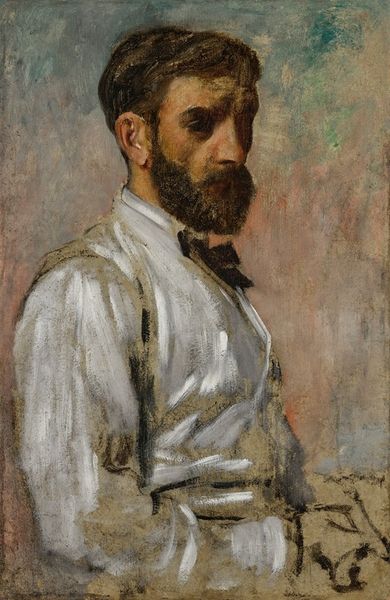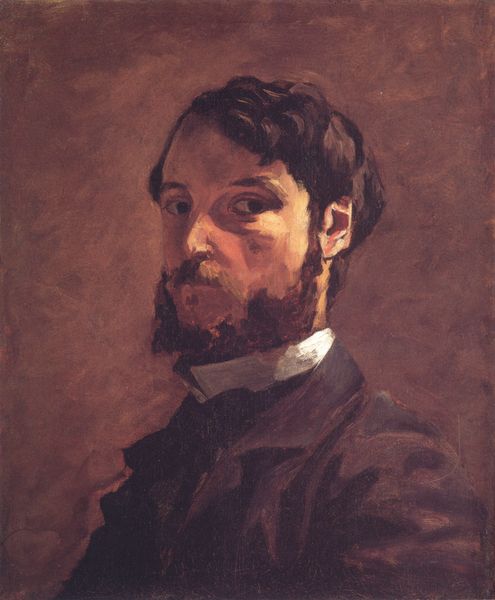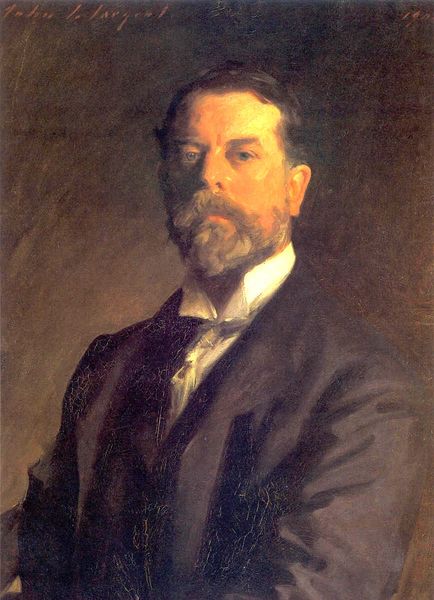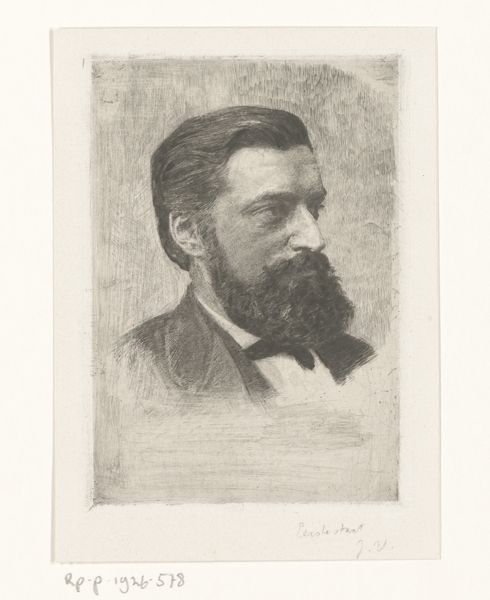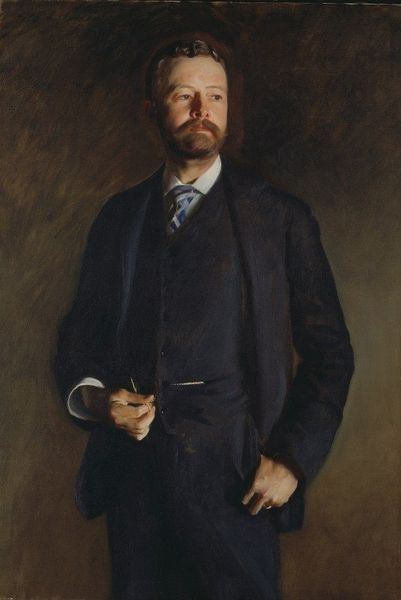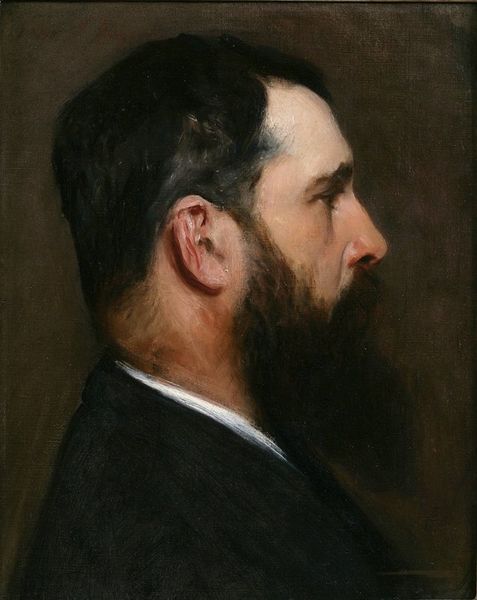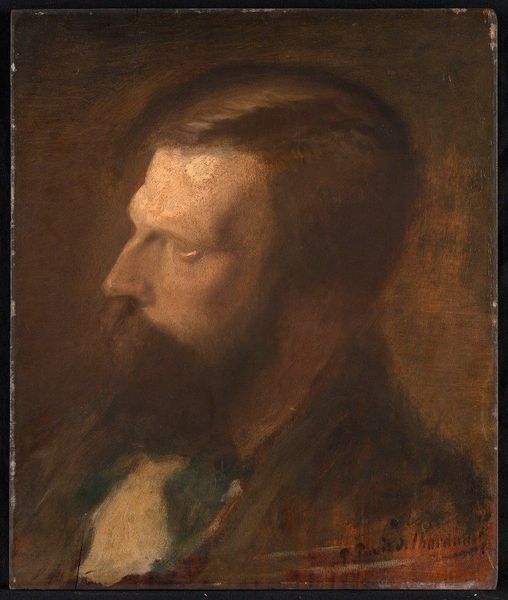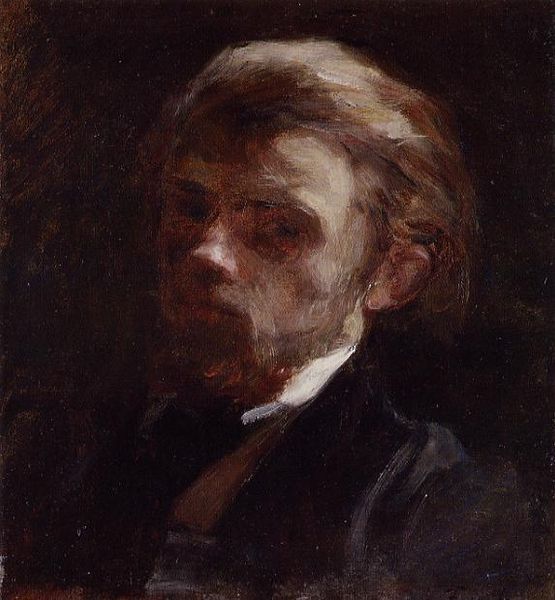
painting, oil-paint
#
portrait
#
self-portrait
#
painting
#
impressionism
#
oil-paint
#
academic-art
#
modernism
#
realism
Dimensions: 30.5 x 25.4 cm
Copyright: Public domain
Editor: Here we have John Singer Sargent’s *Self-Portrait* from 1886, rendered in oil paint. I'm struck by the directness of his gaze and the almost unfinished quality of the edges. What can you tell me about this painting, especially regarding the time in which Sargent painted it? Curator: This *Self-Portrait* offers us a fascinating glimpse into the construction of artistic identity at a pivotal moment. Sargent was navigating the art world of the late 19th century, a world grappling with tradition and radical change. He seems to deliberately position himself outside traditional academic circles through the painting’s apparent nonchalance. Editor: How so? It still feels somewhat formal. Curator: Notice the tension. The dark suit and crisp collar suggest bourgeois respectability, yet the loose brushwork hints at Impressionistic experimentation and places him amongst the artistic avant-garde of the time. Consider how portraiture, historically a domain of the elite, becomes democratized through artists painting themselves, thereby questioning established hierarchies within the art world. Do you see the implied narrative Sargent is building through this contrast? Editor: I think so. He's showcasing both his skill and his rejection of rigid artistic conventions at once, declaring that he can go beyond traditional expectations, or that he chooses not to restrict himself with arbitrary rules. It is about the freedom he acquired through the acknowledgement of one's artistic position within an oppressive power structure. Curator: Exactly. This wasn't simply about self-representation. Sargent presents an interrogation of his role and the artist's evolving social position, reflecting the changing dynamics of class, taste, and artistic expression. Editor: This reframes my entire view of this painting. I’d initially seen it as a simple portrait, but now I recognize it as a statement on Sargent’s negotiation of identity within the cultural and artistic landscapes of his time. Curator: Precisely! And that's the power of looking beyond the surface.
Comments
No comments
Be the first to comment and join the conversation on the ultimate creative platform.

